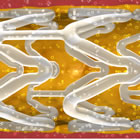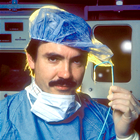
Abbott’s Absorb “Dissolving Stent”
There’s a lesson for the Absorb BVS in the history of interventional cardiology (an area of particular interest in this 40th anniversary of angioplasty year). There’s no question that the concept of a stent that dissolves and disappears is intriguing, and potentially clinically significant. Stents were invented because after balloon-only dilatation, the artery would sometimes collapse, or the spongy plaque would not compress neatly against the arterial wall, or the plaque would regrow, resulting in a very high rate of restenosis (reblocking of the artery).
Stents prevented all of this. Stents reduced the 3-5% acute closure rate that sent patients to bypass surgery after balloon angioplasty almost to zero.
But stents remain in the artery, providing a longer term issue of blood clots, in-stent restenosis, and other adverse cardiac events. To be sure, stents reduced all these events significantly from the balloon-only procedure. But still the goal was to reduce these negative outcomes to a minimum.
Enter the Absorb Bioresorbable Vascular Scaffold (BVS). You could implant the stent, it would do its job and then, after three years, it would disappear. Sounded ideal. But problems surfaced; problems that ultimately were determined to be due to implantation technique (proper preparation, sizing, and post-dilatation were required) or patient selection (those with narrow arteries fared less well).
So Abbott has now required that doctors who implant the BVS be part of a certified registry, and be trained in the specific techniques for optimal implantation of the BVS.
 This harkens back to the very beginnings of angioplasty. Andreas Gruentzig, who invented coronary angioplasty, knew full well the hazards of promoting a technology that was not yet proven. When he did his first patient, he prevented a reporter from the local Zurich newspaper from writing a story about “the first PTCA.” He knew that if the procedure was over-publicized before it had been validated by multiple positive outcomes in several locations, that the procedure would not be taken seriously by the medical community. But he promised the reporter a “scoop” when more procedures had been done.
This harkens back to the very beginnings of angioplasty. Andreas Gruentzig, who invented coronary angioplasty, knew full well the hazards of promoting a technology that was not yet proven. When he did his first patient, he prevented a reporter from the local Zurich newspaper from writing a story about “the first PTCA.” He knew that if the procedure was over-publicized before it had been validated by multiple positive outcomes in several locations, that the procedure would not be taken seriously by the medical community. But he promised the reporter a “scoop” when more procedures had been done.
In contrast, once the FDA approval of the Absorb BVS occurred, the device was heavily promoted as “a revolution in the treatment of coronary artery disease.” Want to see a sampling of these articles? Let me Google it for you!
Another caveat imposed by Gruentzig was that no one could purchase one of his balloon catheters from the manufacturer Schneider unless they had a certificate from him that they had attended one of his courses. This is essentially what Abbott has just required in the European market. You must be a confirmed registry site to be able to have access to the Absorb BVS.
The difference is that Gruentzig instituted these restrictions and cautions from the very beginning. Abbott’s requirement comes five years after CE Mark approval, when negative perceptions about the BVS have already been ingrained in the medical community.
Stay tuned.



